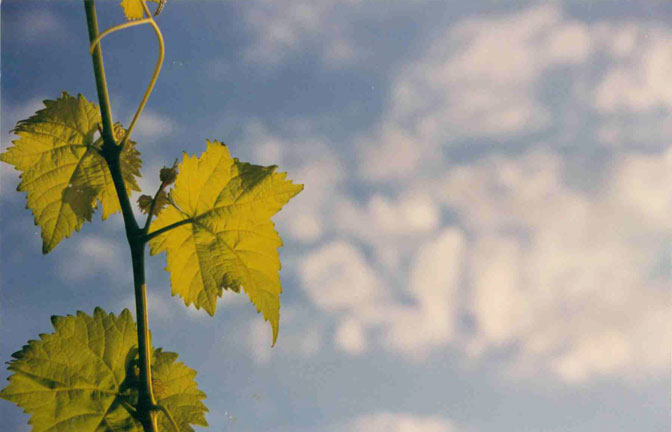Kerner (mid) – This Riesling cross was Germany’s third most planted vine in 1990. The characteristics of this varietal are very similar to Riesling differing only by higher sugar and lower acidity. Its very slightly coarser texture, (than Riesling), is enough to make a varietal or it may be blended.
Pinot Gris (early) – A adaptation of Pinot Noir, this wine varies from crisp and refreshing to luscious and intense (in it’s dessert form). The berry colour ranges from P. Noir purple to P. Blanc greenish yellow, possibly on the same vine. This variety is also known as P. Grigio (Italy), Tokay-Pinot Gris (Alsace), Malvoisie (Loire), and Rulander (Germany and Austria).
Riesling (late) – Germany’s prized white wine grape ranges from light and delicate (cool climates) to fat and blowsy (hot climates). It is planted everywhere, including Argentina, Chile and California but it produces far superior wines from cool climates. The acidic backbone enables this great wine to age, while allowing vineyard characteristics to surface.
Sauvignon Blanc (early) – There are two distinct styles of this variety. Firstly, a non-oaked young, green, tangy, sharp, grassy and herbaceous wine (Sancerre) and secondly an oaked aged, distinctly rounder, more mature wine, with vanilla replacing some green fruit.
Vidal (late) – A French hybrid with thick skins, producing medium acidity and sugar. Very fruity and flexible enabling it to compose dry wines on one hand or the coveted icewine on the other.
Cabernet Franc (late) – This variety, a mutation of C. Sauvignon, enjoys cooler, damper and heavier terroir. Used mainly to calm it’s cousin, this wine is grassy, medium bodied, with soft tannins and notes of rspberry and blackcurrant. Oak aging will only benefit this wine.
Cabernet Sauvignon (late) – Thsi Bordeaux variety is the world’s most famous red wine. Unlike other grapes, no matter where it is grown or how it is vinified, the classic characteristics are notable. C. Sauvignon benefits immencely from extended maceration and oak, and is frequently aged for years to soften it’s tannins. It produces intense blackcurrant, cassis and chocolate flavours.
Merlot (mid) – Similar to C. Franc in that it prefers cooler and damper soils it does, however provide a better complement to C. Sauvignon. The soft, round wine is full of ripe plum, blackberry and other lush fruits. Merlot benefits from extended maceration and oak aging, but it is not demanded, and can be enjoyed earlier than the Cabernets.
Gamay Noir (early) – A simple wine with notes of fresh cherry, strawberry, and some banana and chocolate. Gamay has relatively high acidity and is meant to be consumed at an early age. This variety is often blended with Pinot Noir in many area of France.
Petit Verdot (late)
Shiraz (late) – one of the oldest of the ‘noble grapes,’ this variety has gained great new popularity because of what the Australians have done with it. The wine can be dry, dark, and dense — or earthy and spicy, depending on the vintage weather. Ontario Shiraz tends towards blueberries, prunes, and violets. Fermentation should be long, cool, and oak-influenced.

